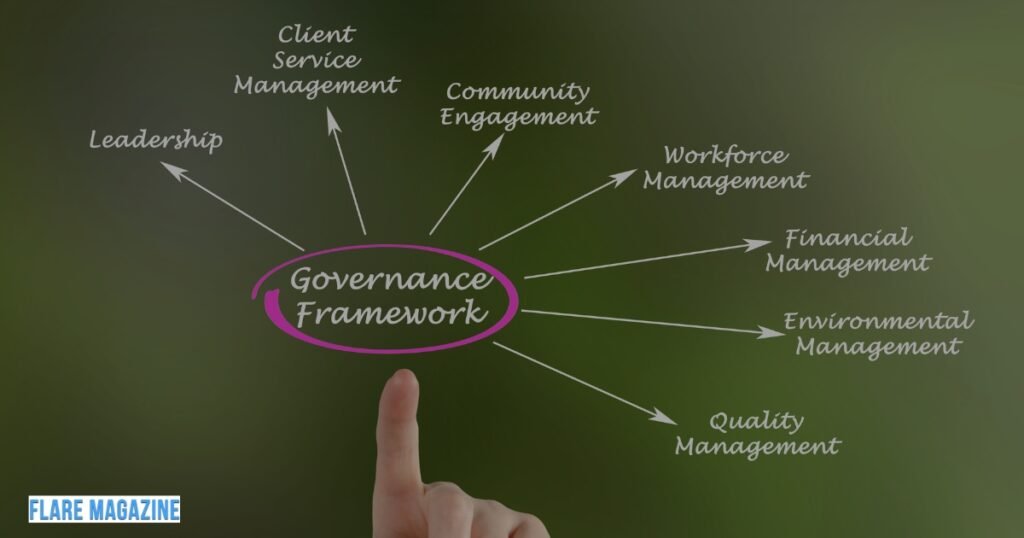Explain the basics of Texas law for exclusive licenses in technology. Understanding these laws helps inventors protect their innovations effectively. Companies benefit by securing technology rights for competitive advantage.
Understanding Texas law is crucial for inventors, companies, and legal practitioners dealing with technology. Laws impact the way technology rights are used and transferred. They provide necessary protection and commercial value for intellectual property.
Define terms like “exclusive license” and “technology licensing” clearly for easy understanding. An exclusive license grants specific rights to use and commercialize technology. Technology licensing refers to legal permissions for using innovative solutions. Texas law offers unique frameworks supporting both innovation and IP protection.
In this blog post, we will learn in detail about What Is Texas Law on an Exclusive License of Technology
What Are Licensing Agreements
Licensing agreements allow one party to use another’s intellectual property legally and securely. These agreements specify how and when the intellectual property can be used by the licensee. Exclusive agreements grant the licensee sole rights, preventing even the licensor from using it. In Texas, licensing agreements follow state contract law and federal intellectual property law. The licensor and licensee must adhere to outlined rights and obligations in the agreement.
Texas licensing applies to diverse technologies like software, medical innovations, and engineering designs. Exclusive licenses give a competitive edge by securing rights to innovative technologies. Drafting and negotiating these agreements require attention to legal details and complexities. Properly enforced contracts protect both parties’ interests and are held legally in Texas courts.
Explore More: What is Demand Flow Technology?
Understanding Exclusive Technology Licenses
Definition: An exclusive license is a legal agreement in intellectual property law. This license grants only the licensee rights to use the technology. The licensee can commercialize the technology without other competitors using it. In contrast, a non-exclusive license allows others to use the technology too. Sole licenses permit only one licensee, but the licensor can still use it.
Scope: Usage rights typically include creating and selling products with the technology. Distribution rights enable the licensee to market the technology widely. Modification rights let the licensee alter the technology as needed. An exclusive license does not usually transfer ownership of the technology. The licensor retains ownership, controlling the broader use of the technology.
Examples: Company A receives an exclusive license to use a software coding tool. This tool helps reduce development time and improve software quality. The exclusive rights stop competitors from using the same tool. Another example is a medical device company holding exclusive rights to innovative designs. Such exclusive access gives them a significant market advantage.
Legal Framework Governing Exclusive Licenses in Texas

Texas Contract Law Principles: Licensing agreements follow general contract law principles under Texas law. The Texas Business and Commerce Code outlines the foundational rules for these agreements. Sections 261 and 301 provide guidelines for contract formation and enforcement in Texas.
A valid contract requires an offer, acceptance, consideration, and mutual intent to bind. Licensing agreements must clearly define terms and conditions for involved parties.
Intellectual Property Laws in Texas: Texas intellectual property laws cover areas like patents, copyrights, and trade secrets. State laws often intersect with federal laws such as the USPTO regulations.
Patent laws protect inventions, granting exclusive rights to inventors for specific periods. Copyrights secure the rights of creators over original works of authorship. Trade secret laws defend confidential business information from unauthorized use by others.
Enforcement and Dispute Resolution: Texas courts provide remedies if a licensing agreement is breached. Legal remedies include damages, specific performance, or contract rescission. Arbitration offers a quicker, private alternative to traditional court litigation. Texas law favors arbitration for resolving contractual disputes, including licensing issues.
Litigation processes are available if parties cannot resolve disputes outside court. Courts ensure that Texas contract and intellectual property laws are correctly applied.
Key Components of an Exclusive License Agreement in Texas
| Key Components | Description |
| Grant of Rights | State rights are granted to the licensee in Texas-exclusive technology licenses. |
| Include territorial limitations defining where the technology can be used. | |
| Field-of-use limitations specify the technology’s specific applications and industries. | |
| Royalty and Payment Terms | Royalties can be fixed payments or based on a percentage of sales. |
| Consider Texas taxation laws affecting royalties to prevent unexpected payment issues. | |
| Duration and Termination Clauses | Clearly define the agreement’s duration for both parties to understand the commitment. |
| Specify conditions allowing license termination, including breach consequences under Texas law. | |
| Confidentiality and Non-Compete Clauses | Texas law treats confidentiality agreements seriously, protecting sensitive information. |
Special Considerations in Texas Law
Texas regulates software under its business and commerce code. These regulations ensure fair trading practices. Biotech companies must comply with federal and state guidelines. Energy sectors follow specific environmental regulations. These rules maintain safety and protect natural resources in Texas. Businesses must stay updated on these changing regulations.
Licensing issues arise in collaborations with Texas universities or corporations. Universities often hold rights to technology developed on campus. Companies must negotiate terms for commercializing university-developed technologies. Licensing agreements protect both academic and corporate interests. Clear contracts prevent future disputes and safeguard intellectual property. It’s important to understand each party’s rights.
Texas law protects employees’ rights to inventions made during employment. Companies may claim rights if inventions are job-related. Employers usually include invention clauses in contracts. Inventors must understand their rights. They should seek legal advice before signing agreements. Protecting intellectual property is essential in technology fields.
Also Read: What is WPB technology?
The Importance of IP Audits Before Licensing
Conducting an IP audit plays a crucial role in technology licensing agreements. An audit checks the licensor’s intellectual property portfolio for legal compliance. It ensures patents, trademarks, copyrights, and trade secrets are valid and enforceable.
- Identifying potential IP ownership issues helps prevent legal conflicts in the agreement.
- Validating the technology secures confidence for both the licensor and licensee.
- Discovering unregistered IP can avoid unexpected challenges during the licensing process.
IP audits protect both parties by confirming protected technological innovations. In Texas, IP audits hold significant importance for legal clarity. Proper IP audits help foster strong business relationships and trust. They ultimately create a solid foundation for successful technology licensing agreements.
Benefits of Exclusive Licensing vs. Non-Exclusive Licensing in Texas
| Benefits | Exclusive Licensing | Non-Exclusive Licensing |
| Control | The licensor maintains full control over how the product is used. | Multiple parties can use the product freely in the market. |
| Market Competition | Limits competition by granting rights to only one party. | Encourages wider market competition among licensees. |
| Royalty Potential | Typically allows for higher royalty rates due to limited access. | Lower royalty rates as product availability increases among users. |
| Business Relationships | Fosters a closer relationship between licensor and licensee. | Encourages collaboration and partnerships with multiple entities. |
| Brand Differentiation | Creates a unique market position with limited product usage. | Increases brand presence by offering licenses to various parties. |
| Market Expansion | Allows for strategic market expansion with controlled product use. | Facilitates rapid market entry with greater distribution opportunities. |
| Revenue Consistency | Provides steady income through agreements with a single licensee. | Generates varied income from several licensees in the market. |
| Long-Term Strategy | Aligns with long-term business goals by focusing on select partners. | Supports short-term gains by licensing to numerous parties quickly. |
Why Choose Texas for Technology Licensing?
Texas has become a premier tech hub thanks to its business-friendly policies. Cities like Austin, Houston, and Dallas are leading the tech revolution. These cities offer excellent tax incentives attracting both startups and large corporations.
The state’s legal system supports innovation and protects intellectual property. Strong IP protection is crucial for companies looking to license technology safely. Texas’ legal environment makes it a popular choice for technology licensing. Companies benefit from contract freedom and certainty in legal agreements.
Texas is home to a strong tech industry with thriving startups and established firms. The state creates the perfect environment for technology commercialization and growth. A growing pool of tech talent attracts businesses from across the globe. This skilled workforce ensures new enterprises can find essential team members easily. By choosing Texas for licensing, businesses enjoy these advantages in the innovation market.
Comparison of Exclusive vs. Non-Exclusive Licenses
| Aspect | Exclusive License | Non-Exclusive License |
| Definition | Grants rights to a single licensee, excluding even the licensor from using the intellectual property (IP). | Allows multiple licensees to use the IP simultaneously, and the licensor retains the right to use the IP. |
| Rights Granted | Full usage rights are transferred to one licensee within the agreed scope. | Partial rights are shared among several licensees and retained by the licensor. |
| Control Over IP | High level of control for the licensee; they are the sole user in the defined scope. | Licensor maintains significant control over the IP due to multiple agreements. |
| Revenue Potential for Licensor | Limited to one licensee’s contributions. | Higher potential as the licensor can license to multiple parties. |
| Competition for Licensee | Eliminates competition within the defined scope, ensuring exclusivity. | May face competition from other licensees using the same IP. |
| Cost for Licensee | Higher upfront fees, royalties, or milestone payments due to exclusivity. | Lower fees compared to exclusive licenses, as the rights are shared. |
| Flexibility for Licensor | Reduced flexibility; the licensor cannot use or re-license the IP within the exclusive scope. | High flexibility, as the licensor can license the IP to others and use it themselves. |
| Benefits for Licensee | – Sole use of the IP ensures market advantage.– No internal competition. | – Lower costs for access to IP.– Suitable for non-critical use cases. |
| Benefits for Licensor | – Potential for long-term partnerships.– Larger payments due to exclusivity. | – Wider revenue streams.– Retention of rights to use the IP. |
| Limitations for Licensee | – Higher cost burden.– Dependence on IP for success. | – No guarantee of market exclusivity.– Competition with other licensees. |
| Limitations for Licensor | – No ability to license the same IP to others.– Dependence on one licensee’s performance. | – Potential dilution of the IP’s value.– Complex management of multiple agreements. |
Common Legal Issues and How to Avoid Them
Challenges in Enforcing Licenses
Identify potential pitfalls like ambiguous terms or non-compliance with Texas law. Ensure all terms are clear, specific, and comprehensive to prevent misinterpretation. Non-compliance with local laws can invalidate agreements, causing enforcement issues. Regularly review and update agreements to align with current legal standards.
Disputes Over Ownership or Scope
Disputes of over-retained rights often occur due to unclear agreement wording. Specify ownership terms clearly to avoid miscommunication and legal wrangles. Carefully define the agreement’s scope to ensure mutual understanding between the parties involved. Address all potential conflicts with transparent and thorough contract terms.
Best Practices
Offer actionable tips for drafting robust agreements to avoid common legal issues. Use precise language for agreements to prevent misunderstandings and ensure enforceability. Involve legal experts in drafting agreements to align with applicable laws and standards. Regularly update agreements and review contract terms to maintain legal compliance.
Real-World Examples of Exclusive Licensing in Texas

One notable example involves a Texas-based software company’s licensing agreement with a multinational corporation. The agreement ensured clear ownership terms, preventing miscommunication between involved stakeholders and ensuring smooth compliance.
Timely legal intervention helped both parties avoid potential disputes and losses. Another case involved a renewable energy firm that licensed its technology to a local energy provider. By carefully defining the agreement’s scope, both parties avoided common legal pitfalls.
Practical Insights
These case studies highlight the importance of clear communication in drafting technology licensing agreements. Texas law requires that the agreements comply with specific guidelines to remain enforceable. Insights from these cases emphasize the necessity of regular legal reviews.
Legal experts advise integrating precise terms to enhance mutual understanding between parties. Texas-based companies recommend involving experienced legal practitioners to navigate complex licensing landscapes effectively.
Steps to Create a Texas-Compliant Exclusive Technology License
- Conduct Due Diligence: Verify the technology ownership and ensure no existing encumbrances are involved.
- Define Scope Clearly: Specify the exact rights, territories, and any applicable limitations within the license.
- Draft the Agreement: Include necessary clauses and align fully with Texas legal requirements for compliance.
- Negotiate Terms: Discuss royalties, establish clear payment schedules, and define termination rights thoroughly.
- Seek Legal Review: Consult a Texas attorney who specializes in technology licensing for expert advice.
- Execute and Monitor: Ensure both parties adhere to terms and address any disputes promptly and proactively.
Conclusion
Texas law governs exclusive technology licenses with specific guidelines for legal enforceability. Clear communication and precise language in agreements prevent common legal disputes and issues. Regular reviews ensure compliance with the ever-changing Texas legal and regulatory landscape.
Consult licensed Texas legal professionals for advice tailored to your unique licensing case. Speak with experts to navigate the complex and evolving technology licensing requirements in Texas.
Emerging trends in technology licensing include greater emphasis on digital rights and online platforms. Expect increasing interactions with newer tech sectors, influencing licensing norms and standards.
FAQ’s
What is technology licensing?
Technology licensing allows one company to use another’s technology legally. This agreement outlines permissions and restrictions. Licensees must follow terms to utilize the technology efficiently. This method advances technological growth and collaboration between organizations.
Why do businesses use licensing agreements?
Businesses use licensing agreements to share technology securely. These agreements help firms expand operations safely. They minimize risk and protect intellectual property, creating trust. Licensing agreements enable beneficial partnerships between companies and inventors globally.
What is an exclusive license agreement?
An exclusive license allows only one party to use the technology. This agreement maximizes revenue for licensors by limiting competitors’ access. Exclusive licenses promote innovation and offer strategic advantages to licensees, enhancing market position effectively.
What is a non-exclusive license agreement?
A non-exclusive license allows multiple parties to use the same technology. Licensing flexibility offers a wider market presence for licensors. This agreement promotes accessibility and competition, facilitating growth in various sectors.
How can companies ensure strong licensing agreements?
Companies ensure strong agreements by using precise language. Legal professionals draft and review terms effectively. Comprehensive agreements prevent disputes and misunderstandings, maintaining legality. Regular updates align contracts with current regulations and protect involved parties.



